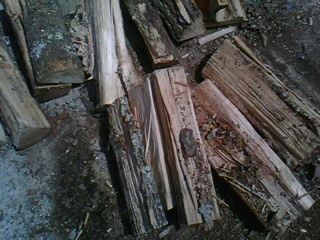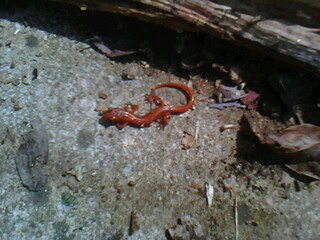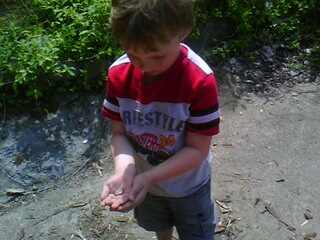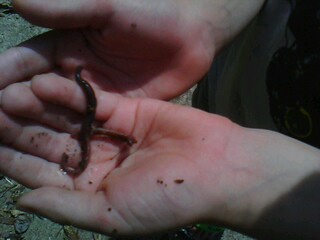Today marked the day that we moved the firewood pile from beside the garage down to the barn.
In doing so, we uncovered a habitat filled with all sorts of critters – several types of larvae, some roly-polies (or pill bugs), an orange salamander (I’m unsure but maybe it’s a red-spotted newt?),
and earthworms galore, which of course led to a little extra investigation. We decided to learn more about our little garden friend, the earthworm.
Earthworms are natural farmers: they plow, harrow, and fertilize the soil. They can live up to eight feet below the earth’s surface but are usually located one to two feet below ground. Other interesting things about worms:
- To break up soil, they grind it using grains of sand within their gizzard.
- To move, it uses two sets of muscles: the inner muscles running lengthwise, the outer muscles running in a circular direction around the body. This is why they can wriggle and flip around so well! To stop, it uses its setae, which are tiny bristles on the underside of the worm that turn so that they point in the opposite direction in which the worm is moving.
- Earthworms are deaf but sensitive to vibration. They have no eyes but can distinguish between light and darkness. They have a weak sense of smell but a well-developed sense of taste and are sensitive to touch.
- They are omnivores, eating earth, leaves, flowers, raw meat, fat, and sometimes other worms.
- Though they have no teeth or jaws, they use a very muscular pharynx to draw even the hardest soil into its mouth.
- They have five hearts.
- They create burrows – straight down at first, then winding about irregularly, reaching up to eight feet deep. Usually the burrow terminates one to two feet deep, where an enlargement exists in which worms will overwinter.
Visit the virtual earthworm tour to better understand how worms digest or reproduce. Another great reference is Squirmin’ Herman. He’ll tell you all about how he moves and breathes, about his five hearts and his reproduction system. You can even take a quiz to see if you actually know the anatomy of an earthworm!
To learn more about earthworms, (or insects, invertebrates, reptiles and amphibians), refer to Anna Botsford Comstock’s The Big Handbook of Nature Study, a rather large download but a great resource to have when you just happen upon nature! (Earthworms are listed on pages 462-465.)
And for more great ideas for your science studies, visit the Science Sunday bloghop.




